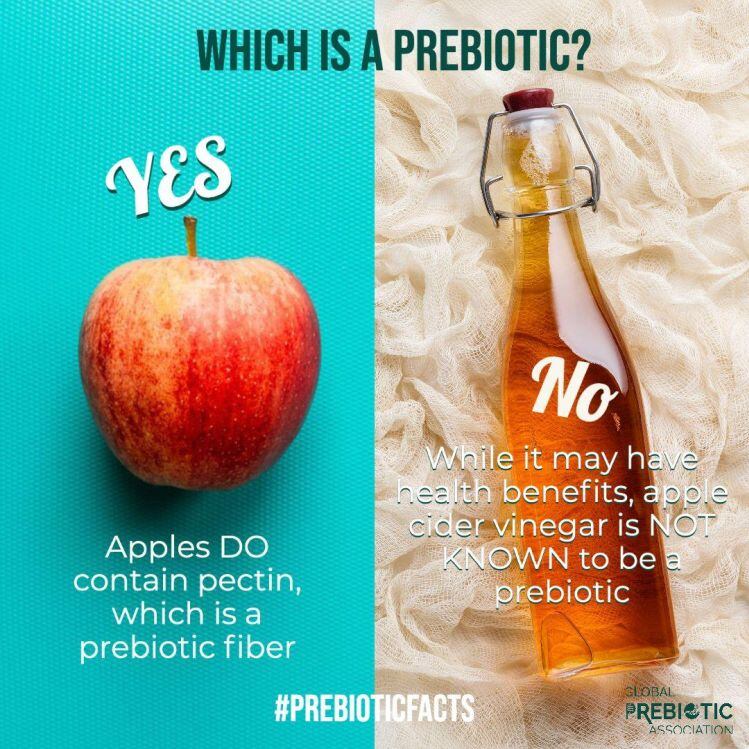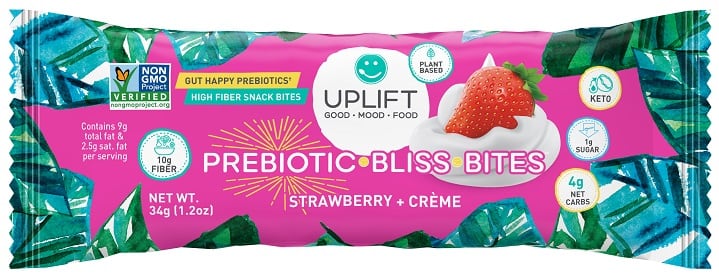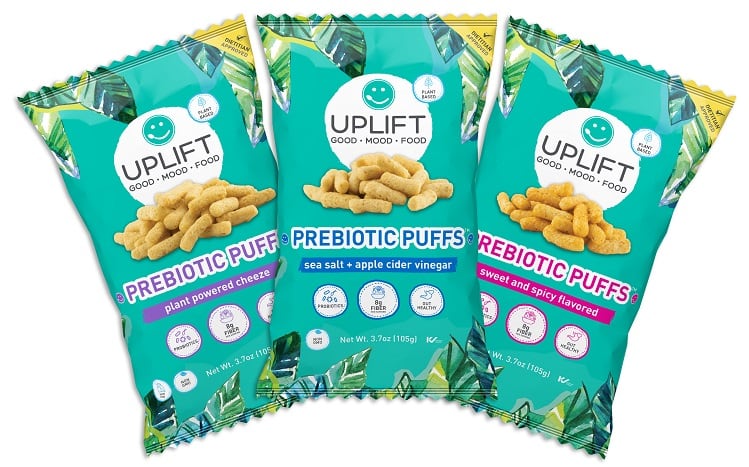“With all this marketing going on, it is helping raise awareness, but I am seeing some misleading marketing or the use of ingredients [aggressively marked as ‘prebiotic’] that let's say the Global Prebiotic Association would not classify as a prebiotic, where someone has used Dr. Google for their research,” she told FoodNavigator-USA.
In basic terms, prebiotics - which promote the growth of beneficial bacteria in the gut – are fermented in the large intestine, serving as ‘food’ for beneficial microbes that already live your colon or elsewhere in your body, and producing beneficial compounds such as short chain fatty acids, which are associated with a series of gut, immune and other health benefits.
Examples of prebiotics include fructooligosaccharides (FOS) and oligofructose (OF) from things like chicory roots; galactooligosaccharides (GOS) from milk sugar or plant materials; xylooligosaccharides (XOS) from things like sugar beet; human milk oligosaccharides (HMOs) found in breastmilk; and resistant starches found in things like potatoes, unripe bananas, tigernuts, and Jerusalem artichokes (they ‘resist’ digestion in the small intestine and reach the large intestine, where they are fermented).
But not every fiber is prebiotic, and not all resistant starches, once processed and heated, remain as prebiotics, says Landau, a nutrition advisor at the Global Prebiotic Association. And not everything marketed as a prebiotic has a ton of science behind it...
Apple cider vinegar: ‘There’s no published research on PubMed showing ACV is a prebiotic’
“An example that the Global Prebiotic Association has talked about is apple cider vinegar,” she says.
While apple skin and pulp contain pectin, which is a prebiotic fiber, apple cider vinegar (ACV) generally does not, she claims, noting that there is no published research on PubMed showing ACV** is a prebiotic, and that there's little chance of any pectin from the apple ending up in the juice.

Green banana flour, tigernut flour… If you bake them, you can lose the prebiotic effects
In other cases, says Landau - who utilizes a broad range of prebiotic ingredients in her cookies, puffs, bites and powders, from XOS from sugar beet, chicory root fiber, Jerusalem artichoke, resistant potato starch, and green banana flour – the issue is not with the ingredient per se, but the way it’s used.
For example, green banana flour from unripe bananas is high in RS2 resistant starch, which is not digested in the small intestine and has beneficial effects on blood glucose among other things, making it an intriguing prebiotic. But the way it is processed and subsequently used in food applications is key, she added, noting that if you disrupt the granule by heat or shear you can lose the resistant starch.
In other words, if you are selling green banana flour in a baking mix that is going to end up in a hot oven, or adding certain resistant starches to cereals that might be processed using high pressure and high temperatures, the starch won’t be resistant to digestion anymore, said Landau, who adds green banana flour to her raw Daily Uplifter powders that consumers can add to their own foods, beverages and smoothies.

‘Once tiger nuts are baked, much of the prebiotic resistant starch that is commonly listed on nutrition facts panels as fiber will no longer be present’
Similar issues impact tiger nuts, which are tubers like Jerusalem artichokes, and contain lots of resistant starch.
“I've seen baked cookies and other products using tiger nut flour [that are marketed as 'prebiotic,'” says Landau, “but it’s important to note that once tiger nuts are baked, much of the prebiotic resistant starch that is commonly listed on nutrition facts panels as fiber will no longer be present, as the resistant starch will convert to a regular carbohydrate that the body can metabolize and attain energy from.
“The prebiotic benefit would be negligible.”
Another of Landau's bugbears is companies using tiny amounts of soluble corn fiber or isomalto-oligosaccharides (IMO) and shouting about their prebiotic effects on food labels, when you may need a much larger dose to actually have prebiotic effects, she adds.
Emerging prebiotics …
Some questionable marketing notwithstanding, it’s an exciting time for prebiotics, claims Landau, who says inulin and galactooligosaccharides (GOS) are probably the best-known prebiotics, but that resistant starches are beginning to gain traction, along with xylooligosaccharides (XOS), while there’s also some exciting research on polyphenols.
“What I’m finding exciting and interesting is some of these emerging prebiotics such as some polyphenols, that are completely not fiber related. In Australia, they're doing research on extra virgin olive oil and the polyphenolic acids in that, and at Uplift Food, we've incorporated kiwi fruit powder, citrus peels, and citrus fibers that are prebiotics.
“It does take time for the science to build, however, so at Uplift, we’re at a kind of midsection of wanting to be sure that we're giving people effective prebiotics but also wanting to introduce people to new ones so we get it out of our head that every yogurt and every beverage has to be pumped with inulin because it has the most science.”
Uplift Food: Now pushing into retail…
So how is Uplift Food - which counts Mondelez International as a minority investor - performing?
It’s been a crazy few years, says Landau, who now has four product lines: Daily Uplifter powder, prebiotic bites, prebiotic puffs, and prebiotic cookies, which all feature meaningful amounts of protein and fiber, a range of prebiotic ingredients, and in some cases, probiotic strains such as Ganeden (Kerry) BC30.
“We started online and we do a lot direct to consumer as well as through platforms such as Thrive Market, but we are now pushing into retail, so we’re in around 350 stores mostly on the east coast. For the puffs, we will be going into distribution via UNFI and KeHE warehouses in December for launching into retail in January.”
Solnul: ‘After we get through this protein craze, there will be a push to get more fiber’
As resistant starch guru Rhonda Witwer has been arguing for years, resistant starch is something of an unsung hero in the world of nutrition, says Jason Bush, PhD, chief scientific officer at Solnul which markets a prebiotic resistant potato starch (RS2) that selectively feeds Bifidobacterium to support digestive health.
Trying to generate excitement around an ingredient called ‘resistant starch’ in a carb-wary food culture can be a challenge, concedes Bush, although the prebiotic fiber angle provides a way in for consumers with Solnul: “I believe after we get through this protein craze, there will be a push to get more fiber, and lots of different types of fiber, although not all resistant starches or fibers have a prebiotic effect.”
And while consumers may not immediately associate the word ‘starch’ with health benefits, the term “resistant potato starch” is a “bit more consumer-friendly on a label than ‘xylooligosaccharides,’” observes chief growth officer Jason Leibert.
Effective at low doses
One particularly attractive feature of Solnul is the fact it is effective at low doses with small particles that are water dispersible and has a neutral taste, claims the firm, which has worked with contract research organization Nutrasource on a trial showing prebiotic benefits at just 3.5g.
“There were strong increases in Bifidobacterium, even more substantial than recent studies on inulin, which is kind of the industry standard,” says Bush, who says study participants also showed a sharp increase in Akkermansia, a beneficial microbe that plays an important role in modulating human weight and metabolism.
“We also saw improvements in self-reported metrics like IBS-related symptoms, and that individuals with loose stools moved towards firmer ones, and those with very firm stools moved towards looser ones, so it had a normalization effect, while we also saw a reduction in gas.”
A separate study funded by MSP Starch suggested that Solnul resistant starch may help improve LDL cholesterol levels, he adds, while another exciting area of focus is insulin sensitivity given the diabetes epidemic in the US: “We have data in an elderly population in two different clinical studies with 30 grams per day, showing improved insulin sensitivity.”
Resistant starch RS2 and the heat factor
But what about the heat-factor? While high amylose cornstarch and chemically modified RS4 retain their resistant starch through baking processes, what about RS2 resistant starches such as Solnul potato starch, a native starch from an unmodified food source?
“60 degrees Celsius is kind of our parameter,” says Leibert. “The key is to keep the granule intact so it passes through [into the large intestine, where it can exert a health benefit]. So protein shakes, snack bars and bites, edible cookie dough, or a seasoning for salty snacks, and overnight oats can work well."
Bimuno: Heat-stable, clinically backed galactooligosaccharide blend
UK-based Clasado Biosciences is well-known in Europe, but is steadily building a presence in the US market with its Bimuno branded ingredient, a blend of blend of non-digestible galactooligosaccharides (GOS) made from lactose via an enzymatic process.
While Bimuno is established in the dietary supplement space, says Doug King, senior sales manager, North America, at Clasado, food and beverage is the next big opportunity for Bimuno, which is backed by multiple human clinical studies spanning gastrointestinal health (reducing abdominal pain, bloating, flatulence and regularity); immune defense (strengthen the body’s defenses and preventing diarrhea caused by pathogens); cognitive health (reducing stress hormone levels, anxiety); and immune health (modulating the immune system, increasing anti-inflammatory and decreasing pro-inflammatory biomarkers).
Notably, it can also be effective at very low inclusion rates, says King (1.37g/day for GI symptom relief; 2.75g/day for prebiotic effect, immune system modulation, antipathogenic activity, brain health and function).
The heat-stable ingredient – which can be supplied as a syrup or spray-dried powder - can work across a wide pH range and also comes with a GRAS no questions letter from the FDA for a variety of food applications (along with infant formula), says King, who is talking to companies about incorporating Bimuno into everything from ready to drink beverages (it dissolves completely in water and has very little flavor) and yogurts, to cereals, ice creams, confectionery and baked goods.
“We’re beginning to see a lot of interest from food and beverage companies as they see consumers becoming more proactive than reactive about their health, especially during the pandemic.”
‘I’d say prebiotics are probably where probiotics were about five years ago’
While the term ‘galactooligosaccharide’ could be “a bit intimidating” to the uninitiated food and beverage consumer, concedes King, consumers recognize the word ‘prebiotic’ on the front of a label, and feel good about it, even if understanding of what this means is still limited.
“I’ve been in the food industry for many years and I’d say prebiotics are probably where probiotics were about five years ago and now we are speaking to large multinational companies as well as small startup companies. In 2022, our focus is to really get the word out in food and beverage.”
* The International Scientific Association for Probiotics and Prebiotics (ISAPP)
** Speaking to FoodNavigator-USA late last year, the founders of Poppi – a fast-growing beverage brand utilizing ACV that’s marketed as a ‘prebiotic soda’ and features the phrase ‘for a healthy gut’ on the front of each can - could not point to human clinical studies specifically demonstrating the prebiotic effects of apple cider vinegar, but said they use “unfiltered ACV” to “ensure that all the pectin contained in ACV makes it into the can.”
While it is unclear what impact the heat pasteurization process has on the other potentially healthful components in ACV, the acetic acid and fibers are not damaged, they insisted.

